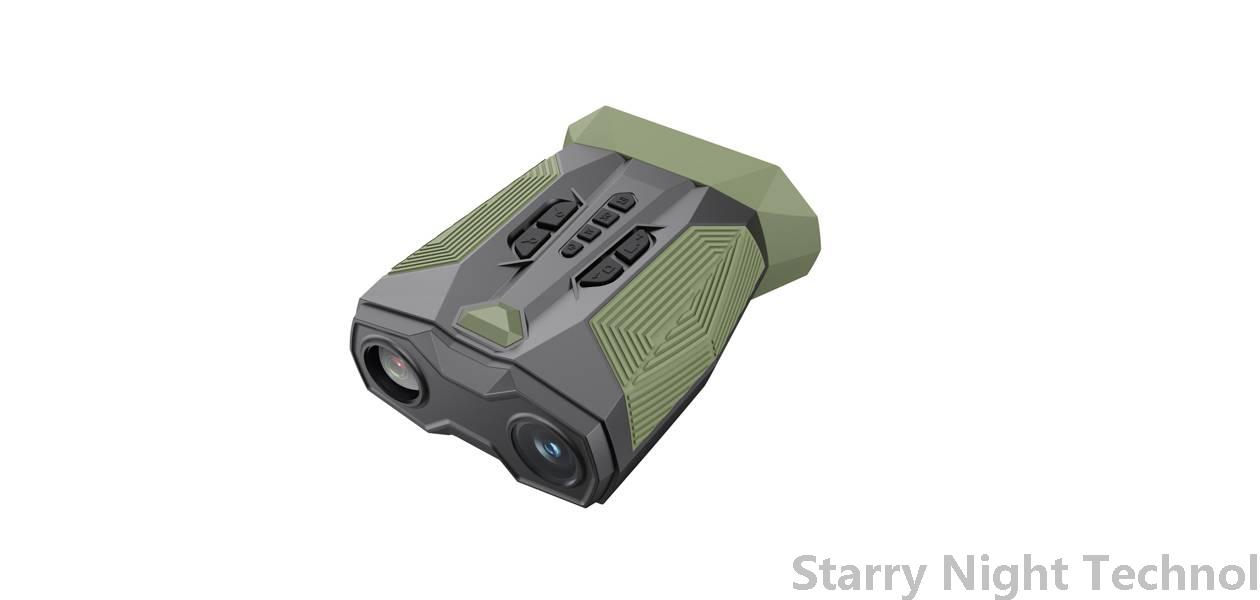Night Vision Devices in Automotive Industry: Improving Driver Safety and Visibility
1758178821000

As night falls, the roads transform. Limited visibility becomes a significant challenge for drivers—a reality that the automotive industry is increasingly addressing through advanced night vision technologies. With innovations in decryption of environmental data, manufacturers are enhancing driver safety and overall visibility during nighttime driving. The advent of night vision devices (NVDs) represents a profound leap towards creating safer roadways, helping prevent accidents that could arise from poor lighting conditions.
#### What are Night Vision Devices?
Night vision devices utilize various forms of infrared technology to detect heat signatures emitted by objects in surroundings. Initially developed for military applications, these systems have found their way into consumer vehicles, marrying high-tech capabilities with everyday functionality. Typically divided into two categories—thermal imaging and near-infrared (NIR) cameras—these devices provide enhanced awareness beyond what traditional headlights can offer.
**1. Thermal Imaging:** This type of NVD detects body heat and translates it into an image, allowing drivers to see pedestrians, animals, or other potential hazards even in total darkness. By capturing the thermal radiation released from warm bodies, such systems allow for greater awareness regardless of ambient light levels.
**2. Near-Infrared Cameras:** Unlike thermal imagers, NIR cameras require some ambient light but are still superior to traditional camera technologies used in cars today. They work by using infrared LEDs to illuminate the area ahead, effectively increasing contrast and highlighting different features while minimizing glare and shadows.
#### Enhancing Driver Awareness
The primary benefit of integrating night vision devices into vehicles revolves around enhancing situational awareness, critical for preventing incidents that lead to injuries and fatalities. According to statistics from the National Highway Traffic Safety Administration (NHTSA), approximately 50% of all traffic fatalities occur at night, despite significantly lower vehicle activity compared to daytime hours. An increase in the effective range of visibility not only enables drivers to identify potential threats sooner but also allows for timely decision-making — steering clear of potential dangers proactively rather than reactively.
One key feature of many modern night vision systems includes object recognition functionalities. These algorithms determine which detected entities pose a risk (like pedestrians loitering on the roadside) versus benign ones (such as streetlights). Alerts may be sent directly to the driver’s dashboard or displayed via heads-up displays, providing intuitive feedback without causing distraction.
#### Night Vision and Advanced Driver Assistance Systems (ADAS)
 When linked with adaptive cruise control, lane departure warnings, or pedestrian detection systems, night vision enhances operational thresholds. For instance, when approaching blind spots illuminated only by weak streetlights, real-time analysis may trigger alerts to assist the driver in safely changing lanes or maneuvering through intersections.
When linked with adaptive cruise control, lane departure warnings, or pedestrian detection systems, night vision enhances operational thresholds. For instance, when approaching blind spots illuminated only by weak streetlights, real-time analysis may trigger alerts to assist the driver in safely changing lanes or maneuvering through intersections.Recent advancements show a trend where NVDs complement existing automated systems - opening doors toward new solutions like fully autonomous driving. The ongoing integration of machine learning ensures deeper behavioral understanding of roadway users, making night-driving dataspheres much safer.
#### Consumer Acceptance and Market Growth
Consumer acceptance of night vision technology has steadily risen over recent years. Once considered an exclusive luxury hallmark often tied to premium models, night vision attributes have transitioned to more mainstream application among mid-range vehicles due to evolving affordability trends. Major automotive players including BMW, Mercedes-Benz, Audi, and others are turning toward NVD incorporation strategies, reflecting market competitiveness powered by technological enhancements.
In parallel with broader adoption across regions, educational campaigns play a pivotal role in improving user comprehension about the potential of night vision tools. Through practical demonstrations, companies aim to inform consumers about how such technology transforms driving experiences, encouraging purchases grounded in utility rather than solely status.
#### Challenges Ahead
Despite remarkable strides, challenges remain before widespread acceptance of night vision devices becomes ubiquitous. Key factors include cost, regulatory considerations, compatibility within varying vehicle types, and ensuring seamless integration with existing technologies. Greater emphasis on research and development is necessary to produce cost-efficient solutions, improve performance, and guarantee effectiveness in diverse driving environments.
Moreover, consideration regarding legislation surrounding emerging technology will become paramount. Policymakers must create frameworks that ensure privacy protection while safeguarding public interests against misuse, particularly concerning surveillance aspects related to Infrared capability.
#### Conclusion
Night vision devices signify considerable progress in the quest for improved driver safety and visibility during adverse evening conditions. Studies substantiate their efficacy in hazard identification, leading to more informed decision-making behind the wheel. Whether through pairing with sophisticated ADAS or elevating autonomy standards, the future beckons further integration of these innovations into the global automotive mosaic. Ultimately, as the automotive industry continues embracing tech-forward solutions, enhanced night vision may redefine perceptions, paving the way for accident-free travels amidst darkened horizons.
Which is a good supplier for night vision device accessoriesStarry Night Technol

